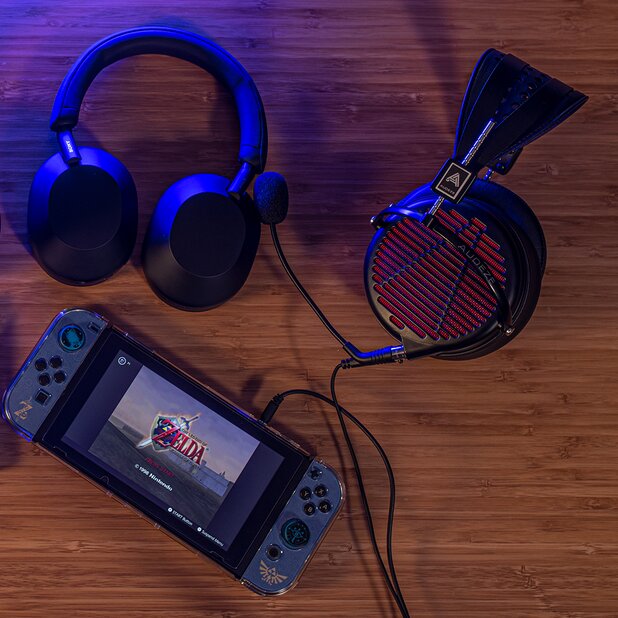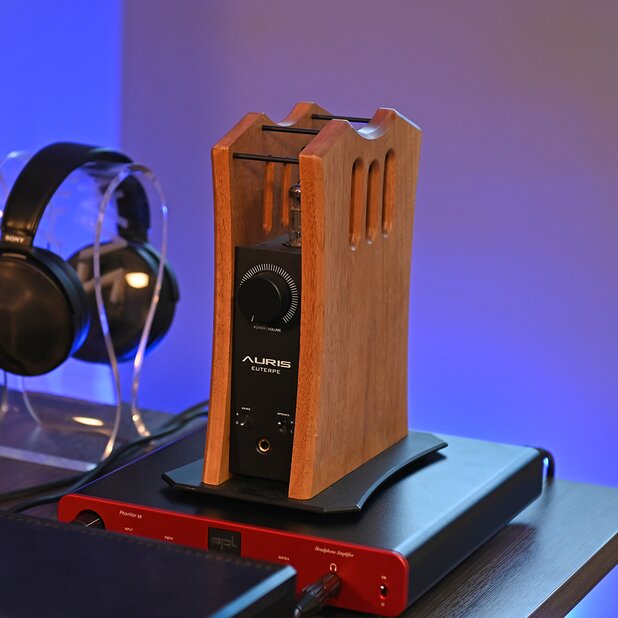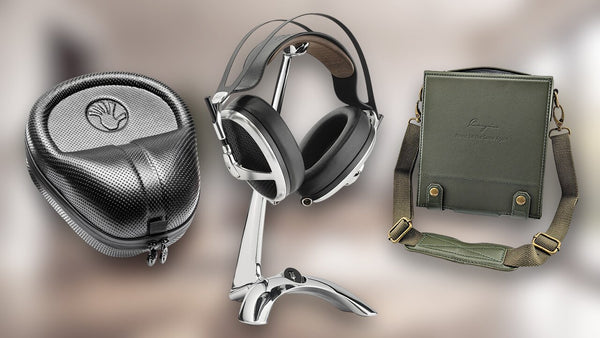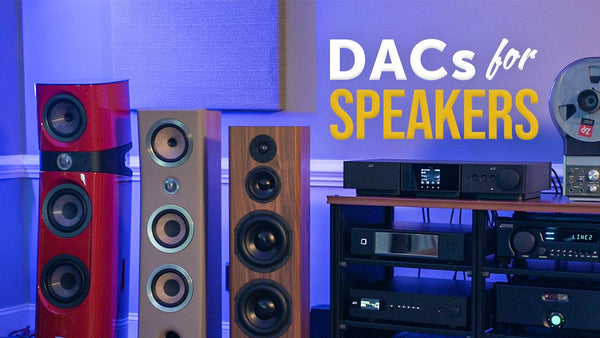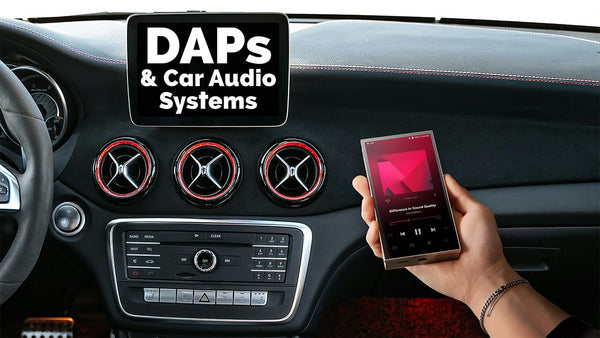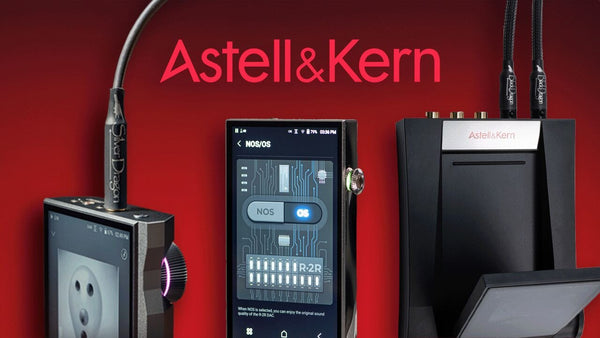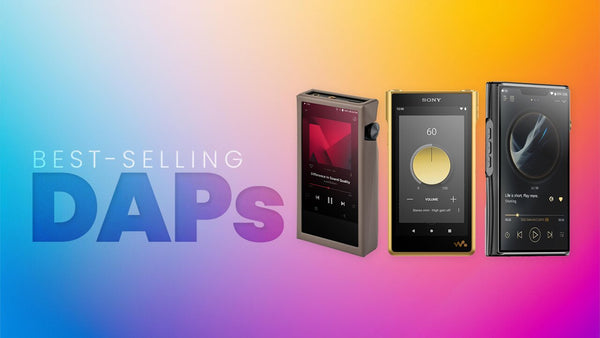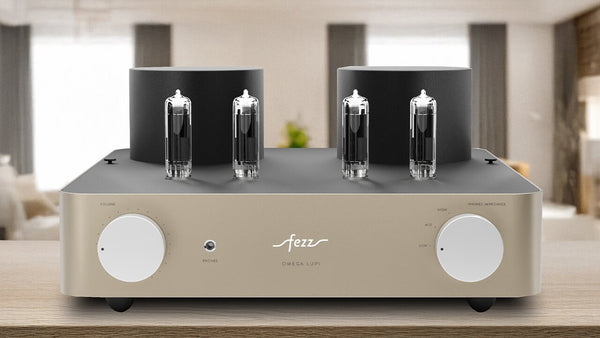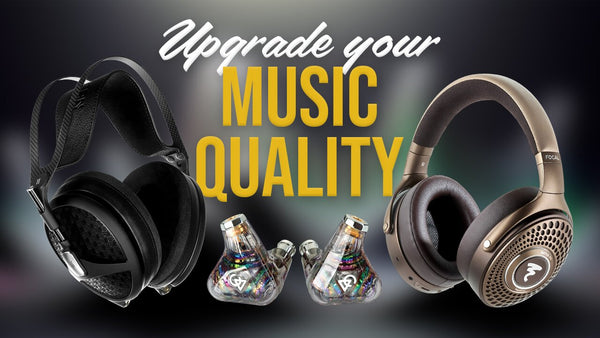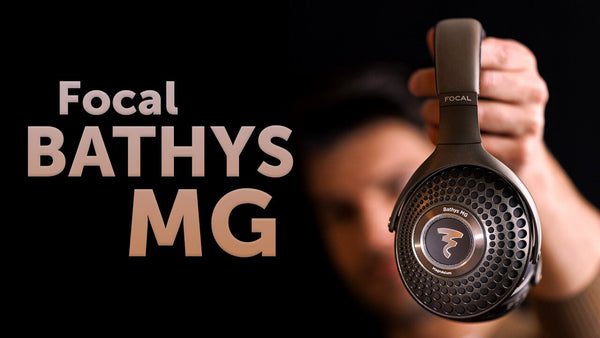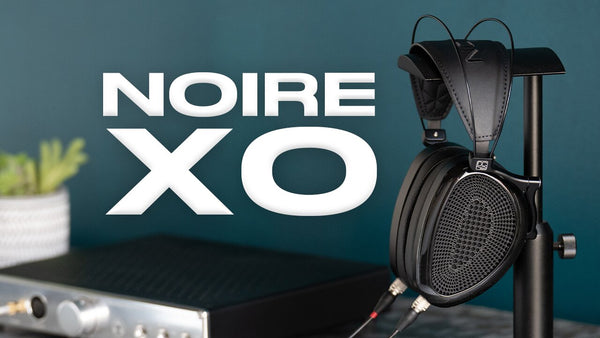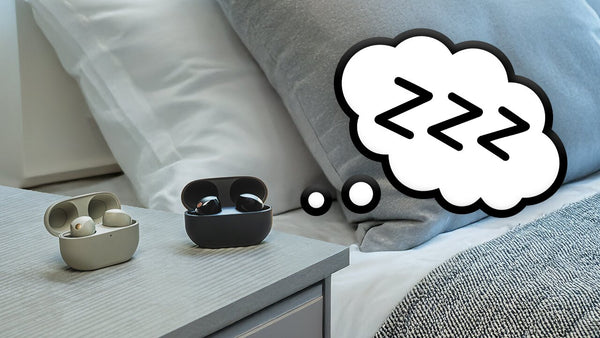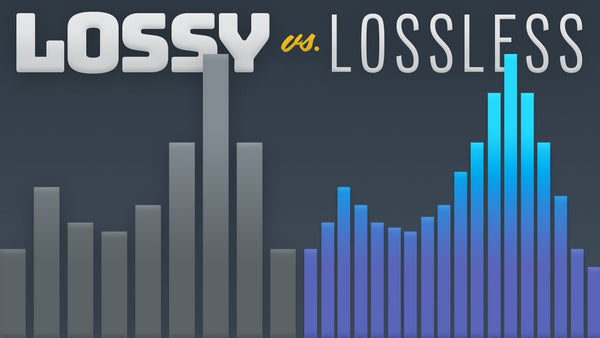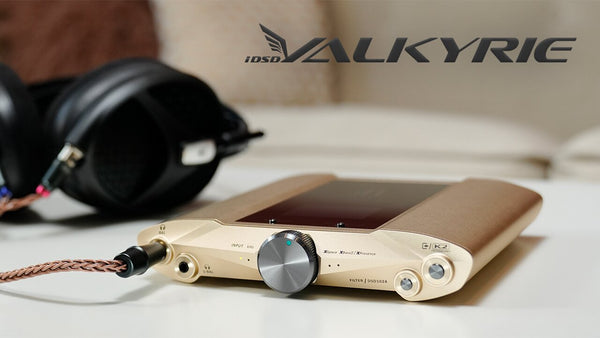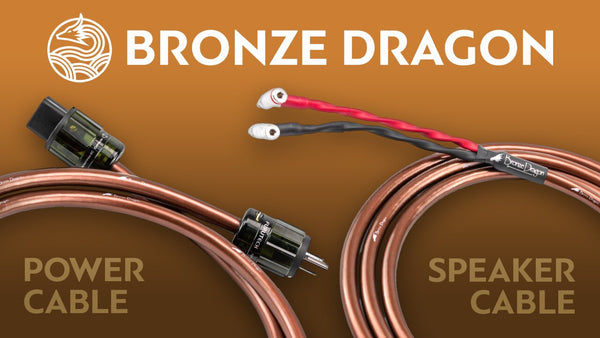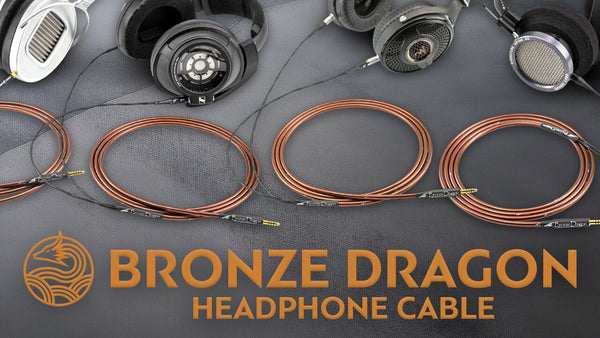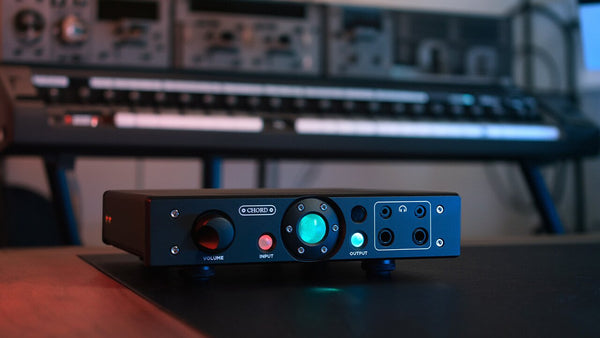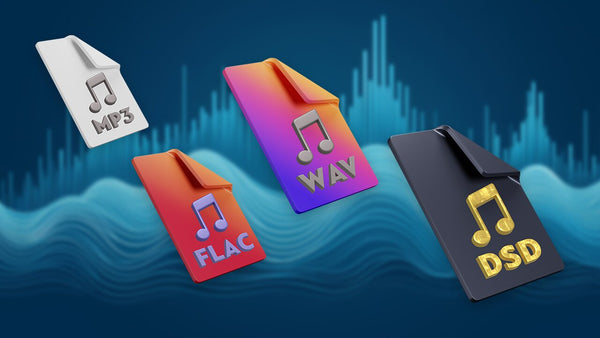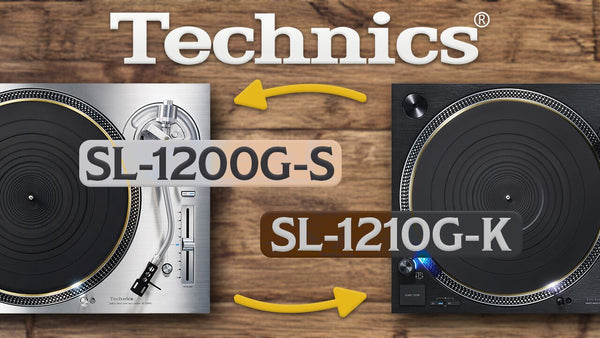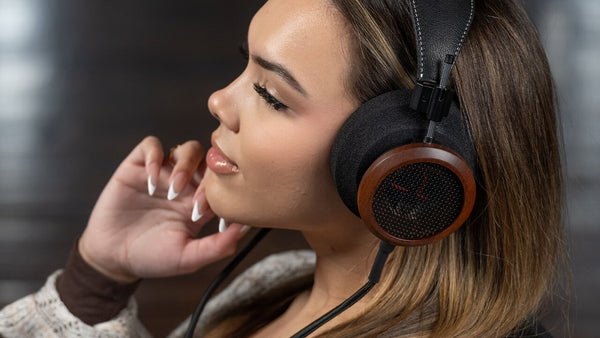The Best Audiophile Gaming Headsets & Audio Gear of 2024

Get Better Sound From Your Xbox, Playstation, Switch, PC, & Mac
For every ten audiophiles, at least two of them are gamers. Trying to keep these two VERY expensive hobbies afloat while trying not to sink your bank account, and having fun while doing it can seem like an impossible feat. But I'm here to show you that there is light at the end of the tunnel. There is hope. I'm here to walk this road with you and hopefully, you'll come out a better audiophile for it. Yeah, there's no way I can help you be a better gamer. Sorry.
Marrying these two hobbies isn't hard to do, but doing it well can be tricky. Great audio can go a long way to enhancing your gaming experience, but unfortunately, most gamers either 1) don't care or 2) don't have the budget. I'm guilty too of investing more in my gaming rig than my audio. But lest we gamers forget, that gaming itself is an experiential process. You can have a $20K gaming rig with dual RTX 3090s, 128GB RAM, 18-core CPU, and cram it in a corner with a 14-inch IPS screen on a tiny desk with a stool that has no back to it. I guarantee you'll be able to play the latest games maxed out but the experience is going to be awful.
I've tried to take every consideration into account here in regard to how to enhance the auditory experience in your gaming. Here's our one-stop-shop for every audiophile gamer out there, or those just wanting more from your gaming experience.

PROS
- Better Sound
- Better Immersion
- Better Gaming Experience
CONS
- Already expensive hobbies
- Console variations can confuse compatibility
Outputting Audio on Gaming platforms
Let's cover some fundamentals with gaming audio based on the platform. When it comes to releasing a new generation of consoles, historically manufacturers have released one console per generation. These generations generally lasted about five years or so. When the PlayStation 1 was released, the next release was the PlayStation 2, then the 3, and so forth and so forth. The latest generation of gaming consoles is a little more complicated. We are now seeing manufacturers releasing numerous variations with incremental upgrades throughout the lifespan of the current console. So you might have a slim version released, followed by a more powerful "pro" version. The only trouble with numerous variations is that specs change and sometimes features too. So what might work on a PS4 Pro might not work on a PS4 slim. It just creates more nuanced instructions on what is compatible and what isn't for a specific model. So I'll try to be as nuanced as possible throughout to recognize compatibility with various console generations and versions.

Playstation
Sony allows for HDMI, Optical, Wireless, wired (3.5mm on the controller), and Bluetooth (with caveats). HDMI and Optical audio out is standard across the board, unless like in the case of the PS4 slim, the optical port is removed. Wireless audio will work if connecting your headset or headphone to a wireless USB dongle. Sony also allows Bluetooth audio output only to supported Sony-branded peripherals. PlayStation 4 and below do not allow for USB Audio output.* Consoles: Playstation 4, Playstation 4 (slim), Playstation 4 Pro, Playstation 5.

Xbox
The same as Sony, Microsoft allows HDMI, Optical, Wireless, Wired (3.5mm on controller), and Bluetooth audio output. Wireless audio only works with supported USB dongles, and Bluetooth is supported only with approved Xbox peripherals. Xbox does not support USB Audio output. Consoles: Xbox One, Xbox One S, Xbox One X, Xbox Series X. Note that S and X series do not have an optical port.

Switch
Nintendo allows for USB-C audio output as well as open Bluetooth protocol to most wireless headphones. Consoles: Nintendo Switch, Nintendo Switch Lite, Nintendo Switch

PC/Mac
Yup, they do it all. You got a port for it, it can do it.
*Playstation 5 does allow for USB Audio output. Newer USB DACs tend to work well enough, though some older DACs/receivers might have more issues. The PS5 is incompatible with USB Audio receivers (DACs) that support the 11-year-old standard of UAC2. Newer formats are supported but coverage is spotty. Feel free to check with us about compatibility with a product if you are considering pairing your Playstation 5 via USB Audio.
NOTE: There is a workaround for Bluetooth audio: you would need to purchase a 3rd party USB Type-A Bluetooth adapter which would then pair with the Bluetooth headphones. For the sake of this article we will not discuss workaround solutions, but rather focus on the native compatibility of the device with your gaming setup. Just note that there is typically always a 3rd party solution to most problems.
Controller Audio
Playstation, Xbox, and compatible controllers with Windows via USB/Bluetooth
Audio protocols on controllers for both Playstation and Xbox only allow for 3.5mm audio output. That means that if you plan to use the controller for audio, then you'll only be able to connect via a headphone cable to the 3.5mm jack. The USB-C jack on the rear of the controller is for charging only, and will not produce any audio output. Bluetooth audio connection bypasses the controller and connects directly to the console.
Bluetooth vs. Wireless Audio
Wireless audio uses a different protocol than Bluetooth, so know that they are not the same thing. Both wireless and Bluetooth provide wireless communication using radio signals. Bluetooth connections are quite limited when compared to what wireless signals are capable of.
It's important to note that when it comes to Xbox and PlayStation if you're wanting to use Bluetooth headphones then you are limited to the brand-approved models that work natively with the console. Unofficially you could use a 3rd-party BT dongle solution for a workaround, but quality control on these devices and failure rates can vary. Nintendo Switch supports open Bluetooth connections but not wireless audio connections. PC and MAC support both Bluetooth and wireless audio protocols, depending on your preference.
Bluetooth
- Limited to 10 meters (approx)
- Consumes less power
- Requires less bandwidth
- Fewer security features
Wireless
- Range limited to 100 meters (approx)
- Consumes more power
- Requires more bandwidth
- More security features
Headphone Driver Types: Dynamic vs. Planar Magnetic
Drivers are small devices inside your headphones that deliver sound to your ears. Each ear cup houses one driver. Drivers transform electrical signals into audible sound waves that are pushed or "driven" to your ears. Think of drivers as miniature speakers. Drivers come in many shapes and sizes, and since they are the primary device used to create sound in a headphone or IEM, they can also vary a lot in sound signature.
Dynamic Drivers
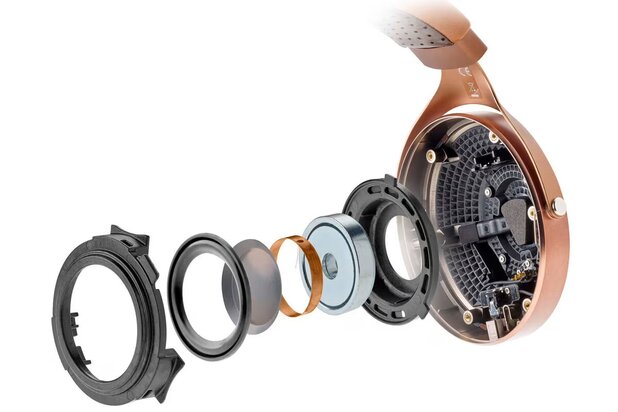
Dynamic drivers (aka moving coil drivers) are the most common type of driver, and the least expensive. Able to cover the entire frequency range, they are known for great bass response in your music.
Dynamic drivers include a tiny, stiff, cone-shaped diaphragm connected to a coil of copper wire around a magnet (typically neodymium - a small but very powerful magnet), which magnetizes the coil. When an electrical signal moves through it, the coil creates a magnetic field that causes it to move back and forth (this is why dynamic drivers are also called "moving coil" drivers). Because it is connected to the coil, the diaphragm also moves, displacing the air around it and producing sound. The substantial amount of air displacement is what gives dynamic drivers a good bass response. Also, dynamic drivers usually have vents, which boosts air movement, furthering the bass response.
The downside of dynamic drivers is that because not all parts of the diaphragm move at the same time (ie, the electrical signal moves from the center of the diaphragm outward), a series of events occur that can cause distortion and loss of resolution, especially at high volumes.
Advantages
- Least expensive; easy to produce
- Capable of covering the entire frequency spectrum
- Easy to power
Disadvantages
- Can distort at high volumes
- Loss of detail
Planar Magnetic Drivers
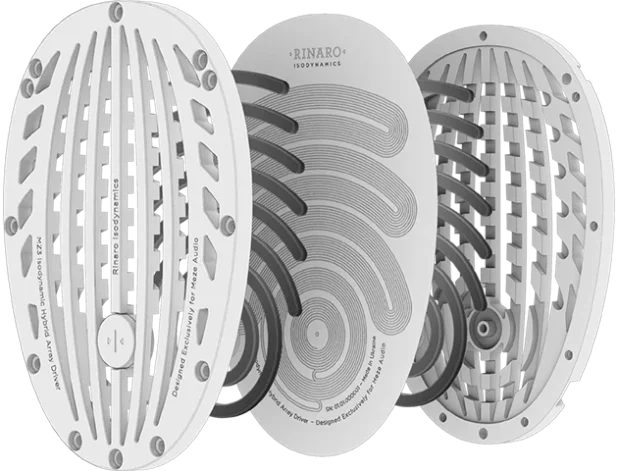
Like dynamic drivers, planar magnetic drivers use magnetic fields. Instead of a coil, though, planar magnetic drivers use a flat, thin diaphragm much like the one in electrostatic drivers. The difference here is that the diaphragm in a planar magnetic driver has wires embedded in it. This creates an electromagnetic field that can interact with the magnetic field, creating sound waves.
The diaphragm in a planar magnetic driver is sandwiched between two arrays of evenly spaced magnets. An electric current travels through this magnetic field and causes the diaphragm to move, thus producing sound. So it's not the coil that moves the diaphragm; it's the magnets. This is how the name planar magnetic originates -- "magnets acting on a flat plane."
Planar magnetic headphones are known for their deep bass response. This is due to a large amount of air that goes through the driver thanks to its large surface area and powerful magnetic force. Another benefit of these drivers is that sound vibrations are evenly distributed across the diaphragm, meaning distortion is minimized.
Advantages
- Low distortion
- Easy to drive, but they perform best with added power
Disadvantages
- Expensive
- Larger, heavier
Headphone Type: Closed-Back vs. Open-Back
Headphones come in two main varieties: open-back and closed-back. It's what you would expect: an open-back headphone has an open or vented ear cup design, whereas a closed-back design has no venting to the outside of the ear cup. There are many pros and cons depending on how you are using the headphones and where, so let's just go over some basics.
Apart from the basics of the easily-understood design differences, there are some notable sonic differences that each type provides to your music. Here's a quick breakdown of each:
Closed-Back Headphones Pros:
- Noise Isolation
- The best option to study with
- Best when you don't want to be disturbed
- Best when you want the most focused listening session
- Greater Bass Impact. Excellent choice for bass-heavy music genres
- More Ergonomic Uses
- Best for commuting
- Best portable option to travel with
- Best when you can afford not to be disturbed
- Great for office use when you want to block out background noise
Closed-Back Headphones Cons:
- Reduced Comfort
- Little to no ventilation
- Can cause sweat around the ears to build up
- Can cause ear fatigue over prolonged listening sessions
- Fewer Driver Options
- Dynamic drivers are one of the only options
- While more driver types are becoming available, the technology is less mature than in open-back headphones
Open-Back Headphones Pros:
- Better Comfort
- Reduced ear fatigue
- Better comfort over long listening sessions
- Lighter weight design thanks to fewer materials
- Allows ventilation for the ears to breath thanks to omission of outer cups
- Best for Certain Situations
- Best for at-home listening
- Best used when you don't mind being interrupted
- Great when you want to maintain awareness of background noise
- More driver options. Dynamic drivers. Electrostatic drivers. Planar Magnetic drivers.
Open-Back Headphones Cons:
- More Fragile
- Not a good portable option to travel with
- Being made of lighter materials means they could be more prone to accidental damage
- Less Bass Impact
- Not the preferred choice for bass-driven music genres
- Fewer Ergonomic Uses
- Best used at home
- Not good for blocking out background noise
- Not a good option for commuting on the train or plane
- Not a good choice for use at work around other people

Closed-Back Headphones Sound: The 'In Your Head' Sound
- Escapism is incredibly immersive
- Centrally located sense of presentation
- A slightly less musical sense of presentation
- More isolating and introspective sound signature

Open-Back Headphones Sound: Superior Sound
- Escapism has a more “live” soundstage
- The best option for critical listening sessions
- A more open, natural, and wider sense of presentation
Gaming Headsets [By Price]
What's the difference between a headset and a headphone? Headsets have a microphone. We'll go ahead and classify this section as headphones that have detachable boom microphones. We'll have some headphone options in the next section that have some integrated mics into the headphone itself that would technically work for this section. Headsets are integral to those who like to play multiplayer games, where you can talk to your teammates or enemies during gameplay. Boom mics are great to make sure that you are heard clearly and without interference, as they allow the microphone to be wrapped around to your mouth. The nice thing about these headset selections is that they either come with the option to completely remove the mic or swap out cables for a non-mic version, letting these headphones serve double-duty as great music-listening headphones. They're also versatile in that they can connect in a multitude of ways to your music or gaming source.
Audeze Maxwell Wireless Gaming Headphones
Audeze's newest gaming headset, the Maxwell Wireless Gaming Headphones represent the perfect fusion of audiophile-grade sound and gaming-specific features. For competitive gamers, the Maxwell offers high-resolution 24-bit/96kHz audio over both wireless and USB connections, with ultra-low latency wireless performance that provides three times the range of standard 2.4GHz connections. The integrated Dolby Atmos support (for Xbox version) and advanced 3D audio technology allow gamers to precisely pinpoint enemy positions through footsteps and environmental cues. The headphones also feature AI-powered noise filtering microphones with FILTER technology for crystal-clear team communications, and the robust aluminum and steel construction ensures durability during long gaming sessions. With Bluetooth 5.3 support and compatibility with advanced codecs like LC3plus and LDAC, along with Bluetooth Multipoint for seamless device switching, the Maxwell provides exceptional versatility for gamers who also demand audiophile-grade sound quality for music listening.
We recommend pairing the Audeze Maxwell Gaming Headphone with our popular Silver Dragon Portable Headphone Cable. This cable will bring out more detail and clarity in your gaming session when it matters the most. The Silver Dragon will provide more resolution, clarity, and detail in your music. It pairs well with bass-heavy headphones, as it will tighten up the lower frequencies and correct a bloated low end. It's also a great choice for analytical listeners, as it emphasizes clarity in the instrumentation and increases the overall soundstage. Compatible with any genre, the Silver Dragon works especially well with classical, jazz, and other music with lots of instrumentation and nuance. If you're a critical listener, there's no substitution for the Silver Dragon. Level up to the Silver Dragon and experience your music like never before.
Audeze LCD-GX Headphones
If you're already an audiophile, then the format of the LCD-GX probably looks pretty familiar already. The LCD-GX is stylistically a lot like Audeze's other LCD lineup of headphones, only this time they offer you a cable option with a built-in microphone. The nice thing about the mic is that it's terminated before the headphones, meaning you can swap it out at any time for a regular cable (included) for listening to music. The departure from other headsets on this list is that the LCD-GX doesn't have any of the other wireless connection options for audio. That being said, we also recommend pairing the LCD-GX with a headphone amplifier to get the full potential from the planar-magnetic drivers. The open-back design will also provide a great soundstage and airiness to your music and game audio alike. The Audeze LCD-GX is one of the most premium headset options to upgrade your gaming experience when it comes to sound and fidelity.
The Silver Dragon Premium Headphone Cable for Audeze will add enhanced resolution and detail to your headphone. We recommend pairing this cable with Audeze headphones that are warmer in sound signature to help bring out additional details that the headphone signature will mask. For mastering engineers, audio engineers or anyone who appreciates listening critically, adding the Silver Dragon headphone cable to the more analytical sound signature headphones in the Audeze lineup is the perfect way to add detail and top-end energy to the more neutral soundstage with enhanced room for your music to breath.
Honorable Mentions: Legacy Products
Audeze Penrose
The Penrose is one of the best headset options for console owners due to the fact that it specifically comes in an Xbox and PlayStation variant. These come natively compatible with each respective gaming system (plug & play) and use wireless audio via the included USB dongle. These will also work with PC and MAC via the dongle, as well as USB-C with the included charging cable. The Penrose comes equipped with Bluetooth as well to mobile devices, PC, etc, and makes for a much more affordable entry point to high-fidelity gaming audio than the big brother Mobius. The Main differences are that the Penrose does not include head-tracking technology and comes with a different broadcast-quality microphone. If you're a console player, the Penrose should definitely be a consideration.
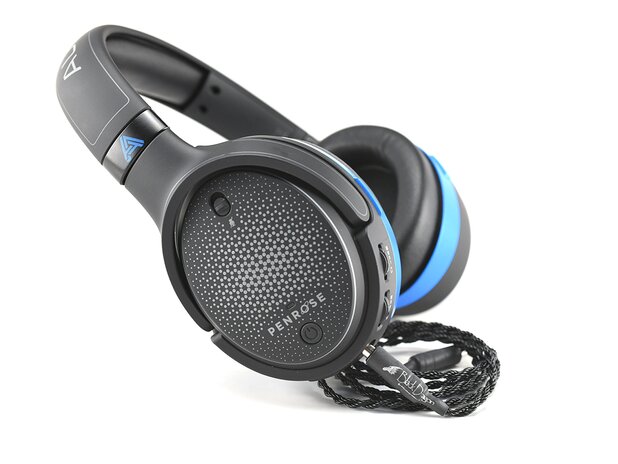
Audeze Mobius
The Mobius is the Penrose's big brother, with added technology that makes even the most seasoned gamer say, "whoa." 3D head tracking is the real star of the Mobius, along with the same excellent-sounding planar magnetic drivers that will make your music and game audio level up. The on-ear volume and mic controls make for easy adjustment on the fly and the rugged construction will assure that it will still be fine after your latest rage-quitting episode. The Mobius is one of my favorite gaming headphones on the market, but I also really enjoy using them for listening to music. The closed-back design of the planar driver gives tons of energy to the music - great accuracy, spatial audioimaging, and just an overall pleasant sonic experience. The head tracking is a neat feature and shines in VR scenarios, as well as lets you experience your favorite music in a whole new way. Connect via the USB-C for USB audio on a PC, or use Bluetooth and high-resolution codecs to go wireless. The detachable boom mic is nice when you just want to listen to music and comfortability is top-notch. The Mobius is the best of both gamer and audiophile worlds for a headphone under $500.
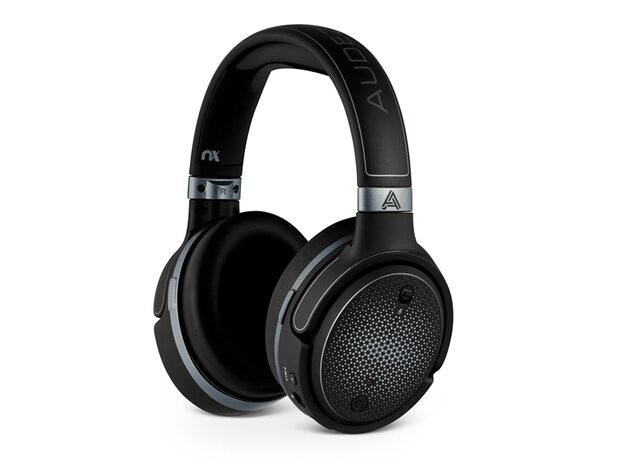
Gaming Headphones [By Price]
Sennheiser Momentum 4 Wireless Headphones
The Momentum 4 is Sennheiser's latest wireless noise-canceling headphone. They've made some great updates this year, and the new styling is similar to the popular Sony WH-1000XM5. The sleek black design, minimalist ear cups with added gesture/touch controls, and improved comfort make the Momentum 4 a serious contender for best do-it-all headphone. Where the Momentum 4 surpasses the XM5 is when it comes to the sound quality. Sennheiser has always had some of the best analytical audiophile-grade sound quality in all their headphones, no matter the cost, and the Momentum 4 trumps other consumer-grade ANC headphones in this regard. Clear, detailed, with plenty of bass - it's the crispness of the sound that stands out. I had a blast using these on-the-go with my Nintendo Switch, and the added noise-canceling aided in the overall immersion while gaming on the couch or wherever. If you prefer better sound quality over noise-canceling or other smart-app integration, then be sure to check out the Sennheiser Momentum 4. Your games and music will thank you.
The Bronze Dragon Portable headphone cable is designed for listening on the go with headphones like the Focal Bathys, Sony WH-1000MX5, Sennheiser Momentum, and similar single entry connection headphones. The Bronze Dragon helps create a warmer presentation with bigger and fuller body, adding bottom end strength and muscle. Our Bronze Dragon Portable headphone cable is musical without becoming lush or bloated and features a very flexible cable that's perfect for on-the-go applications.
Compatible With: Playstation (Wired), Xbox (Wired), PC (Wired, BT), Switch (Wired, BT)
Great audiophile-grade sound in a noise-canceling headphone
Insane battery life, touch controls, ANC
Sony WH-1000XM5 Wireless Noise-Canceling Headphones
The Momentum 4 is Sennheiser's latest wireless noise-canceling headphone. They've made some great updates this year, and the new styling is similar to the popular Sony WH-1000XM5. The sleek black design, minimalist ear cups with added gesture/touch controls, and improved comfort make the Momentum 4 a serious contender for best do-it-all headphone. Where the Momentum 4 surpasses the XM5 is when it comes to the sound quality. Sennheiser has always had some of the best analytical audiophile-grade sound quality in all their headphones, no matter the cost, and the Momentum 4 trumps other consumer-grade ANC headphones in this regard. Clear, detailed, with plenty of bass - it's the crispness of the sound that stands out. I had a blast using these on-the-go with my Nintendo Switch, and the added noise-canceling aided in the overall immersion while gaming on the couch or wherever. If you prefer better sound quality over noise-canceling or other smart-app integration, then be sure to check out the Sennheiser Momentum 4. Your games and music will thank you.
The Bronze Dragon Portable headphone cable is designed for listening on the go with headphones like the Focal Bathys, Sony WH-1000MX5, Sennheiser Momentum, and similar single entry connection headphones. The Bronze Dragon helps create a warmer presentation with bigger and fuller body, adding bottom end strength and muscle. Our Bronze Dragon Portable headphone cable is musical without becoming lush or bloated and features a very flexible cable that's perfect for on-the-go applications.
Compatible With: Playstation (Wired), Xbox (Wired), PC (Wired, BT), Switch (Wired, BT)
Best-in-class noise-canceling do-it-all headphone
Great sound—puts you "in the action"
Focal Bathys Wireless Headphones
Lucky for this list, the Bathys was just released. Like the Sony XM5, the Bathys can do a lot, only when it comes to sound quality, it can do it a lot better. Focal put a lot of tech into their first noise-canceling headphone, and needless to say, it delivers. I don't think the noise canceling compares to the XM5, but it's effective, and combined with Focal driver technology, it delivers a much more premium sonic experience. But that is to be expected since the Bathys is twice the price of the XM5. The Bathys has a nice soundstage with plenty of clarity and dynamics, making it a great option for both gaming and music listening. Obviously, you'll be limited (natively at least) as a console user with Bluetooth, but the pairing process works just fine with the Switch and PC. However, you'll be able to use the Bathys wired on all platforms, but know that because of all the tech you'll need to have the headphone powered on for sound. Like the Penrose and Mobius, the Bathys can't be used passively, but I'll happily trade the option to save battery for a superior audio experience, and that's just what the Bathys offers.
The Bronze Dragon Portable headphone cable is designed for listening on the go with headphones like the Focal Bathys, Sony WH-1000MX5, Sennheiser Momentum, and similar single entry connection headphones. The Bronze Dragon helps create a warmer presentation with bigger and fuller body, adding bottom end strength and muscle. Our Bronze Dragon Portable headphone cable is musical without becoming lush or bloated and features a very flexible cable that's perfect for on-the-go applications.
Compatible With: Playstation (Wired USB), Xbox (Wired), PC (Wired, BT, USB), Switch (Wired, BT, USB)
Amazing Focal sound combined with noise-cancellation
French styling, premium materials and construction
HiFiMan Ananda-BT R2R Headphones (2024 Version)
The HiFiMan Ananda-BT R2R Headphones represent a perfect fusion of audiophile-grade sound and gaming functionality, making them an exceptional choice for gaming enthusiasts who demand superior audio quality. These wireless planar magnetic headphones feature advanced R2R DAC technology and HiFiMan's innovative Stealth Magnet design, delivering precise spatial audio and a wide soundstage that's crucial for competitive gaming. The headphones support high-resolution audio up to 24-bit/192kHz via USB and 24-bit/96kHz through Bluetooth, ensuring exceptional sound quality whether you're deep in a gaming session or enjoying music. Their NEO "supernano" Diaphragm, which is 80% thinner than previous designs, provides fast response times and detailed imaging that helps gamers pinpoint enemy positions and immerse themselves in game environments. With support for high-resolution protocols including LDAC™, aptX™, and aptX-HD™, along with comfortable ergonomic design for extended gaming sessions, the Ananda-BT R2R offers gamers the perfect combination of wireless convenience and audiophile-grade sound quality.
We recommend pairing the HiFiMan Ananda-BT R2R with our Silver Dragon USB Cable for connection to your gaming device. Made with UP-OCC silver conductors and high-quality materials, the Silver Dragon USB Cable features reinforced connectors designed to maintain a secure, stable connection at all times.
Sennheiser HD 800S Headphones
To top our list of headphones is one that gamers and audiophiles everywhere revere for its grand soundstage and wonderful detail and clarity. The HD800S from Sennheiser is a favorite on both sides of pro and consumer audio, and that's saying a lot. Sennheiser is known for its clean analytical sound, and when it comes to open-back headphones, it's hard to find an equal for imaging and soundstage. That's why it makes for one of the best headphones all around for gaming. You'll want to pair the HD800 S with a headphone amp to get the most from it, but you'll be surprised with the amount of sound detail it will bring to your gaming experiences. The ear cups are large and extremely comfortable, and I find myself wearing them for hours at a time with no fatigue whatsoever. Of course, they are the most expensive headphone on our list too, but there is a reason why big-time streamers and gamers recommend the Sennheiser HD800 S for their setups. Better sound means better immersion which means better gaming experiences all around.
We recommend our Black Dragon Premium to add more musicality to the HD 800S. But if you enjoy an analytical sound and don't want to stray from that then the Silver Dragon Premium is going to be another great option for the HD 800 S. For even better sound quality we recommend pairing the HD 800 S with a headphone amplifier to drive them to optimal performance.
Compatible With: Playstation (Wired), Xbox (Wired), PC (Wired), Switch (Wired)
Best gaming headphone on our list
Recommended with headphone amplifier–incredible sound and soundstage
The moral of the story here is that if you want good gaming headphones, then just use good headphones. Chances are more times than not, if the word "gaming" is in the name, and it's under like $200 bucks, then it's probably not all that great for gaming.
DACs & Amps
DACs and amps are a great way to level up your gaming audio, providing more resolution and power to your connected headphones or bookshelf speakers. An external DAC will more efficiently and accurately convert your digital data than an integrated factory DAC, resulting in major gains in overall fidelity and sound quality. Amplifiers are a good choice if you have a headphone that requires more power, like a planar driver, or if you want to connect to a small set of speakers. They also have a plethora of I/O and connectivity options for a variety of gaming setups that we'll go over in this section.
iFi Audio Gryphon Headphone Amp DAC
This DAC amp is insane. Of all the gear I've had the pleasure of checking out, reviewing, and testing in the past year, the Gryphon from iFi is by far my favorite device. I recently did a listening test and face-off with the popular mojo 2 a few months ago with everyone here at Moon Audio, and the big takeaway was that even though the Mojo 2 won out based on sound alone, the features and the very close sound quality, in comparison, makes the Gryphon the better buy. Bluetooth, USB Audio, unbalanced and balanced ins and outs, amazing sonic enhancements, and more, in a portable size that you can take with you anywhere? I don't know why you haven't pressed "Add to Cart" yet. It was one of the few products that worked natively with almost every gaming setup we tested. The Burr-Brown DAC chipset is natural-sounding, with plenty of bass response and a fun signature right out of the gate. The XBass and XSpace sound enhancements go a long way to legitimately increase the soundstage and the bass response when you want it. Read more about the Gryphon in the full review if you want, but I'll just save you time: just get one.
We recommend pairing the iFi xDSD Gryphon Headphone Amp DAC with our Silver Dragon USB Cable for data transmission. Our Silver Dragon USB Cable will deliver seamless digital transmission between your source device and the xDSD Gryphon. Made with UP-OCC silver conductors and high-quality materials, the Silver Dragon USB Cable features reinforced connectors designed to maintain a secure, stable connection at all times.
Compatible With: Playstation (USB), Xbox (Wired), PC (USB), Switch (USB)
Incredibly versatile DAC Amp—plethora of features and connection options
X Bass and X Space + Burr Brown DAC for excellent sound
Chord Electronics Mojo 2 DAC Headphone Amp
The Mojo 2 from Chord Electronics is by far one of the most popular portable DACs on the market. Chord has made some significant updates to the original Mojo portable DAC amp, including the configuration options and the overall amazing sound quality. The Mojo 2 makes an easy addition to any gaming setup due to its ability to connect via USB audio transmission, coax, and optical. Optical was the preferred connection choice for consoles, and USB Audio sounded superb as well on PC and Switch. The additional crossfeed, frequency and EQ adjustments, and revamped menu system makes the Mojo 2 a very customizable device, although the menu system can be complicated and require a bit of getting used to. It is the best-sounding portable DAC on the market in this price range, and the size and power make it the perfect companion and accessory for your gaming setup.
The Silver Dragon USB Cable is our best-selling cable at Moon Audio and the perfect companion for the Mojo 2. The Silver Dragon USB transfers digital audio from a computer or portable device such as a Phone, Tablet, or DAP (digital audio Player) to a USB-capable DAC. Also consider the popular Silver Dragon Toslink Digital Cable for the Mojo 2.
Also consider the popular Silver Dragon Toslink Digital Cable for the Mojo 2.
Compatible With: Playstation (USB, Coax/Opt), Xbox (Coax/Opt), PC (USB), Switch (USB)
Best-sounding portable DAC, superior single-ended audio quality
Expanded menu system, dual headphone jacks
iFi Audio NEO iDSD 2 Lossless Bluetooth DAC/Amp
The iFi Audio Neo iDSD 2 Lossless Bluetooth DAC/Amp combines powerful audio processing with versatile connectivity options that make it perfect for both gaming and high-end audio equipment. With its impressive 5,551 mW output power at 32Ω and four adjustable gain settings, it can drive virtually any gaming headphones while providing crystal-clear sound reproduction. The DAC/Amp's advanced features, including XSpace for enhanced soundstage and XBass II for optimized low-frequency response, allow gamers to fine-tune their audio experience for better positional awareness in competitive games. Its compatibility with gaming consoles through coaxial and optical inputs, along with support for high-resolution audio formats up to 32-bit/768kHz PCM and DSD512, ensures exceptional audio quality whether you're gaming on a PS5 or PC.
We recommend pairing the iFi Audio NEO iDSD 2 Lossless Bluetooth DAC/Amp with the Black Dragon Interconnect Cable with RCA and XLR connectors and the Black Dragon Coax Digital Cable with RCA connectors. The Black Dragon Interconnect Cable is the perfect link to connect the Neo iDSD 2 to other audio devices. Sold in pairs, our interconnect cables offer a remarkable solution where noise isolation is key. For connecting an external master clock, we recommend our Black Dragon Coax Digital Cable with RCA connectors. You'll get the best possible digital transmission when timing matters the most.
Compatible With: Playstation (Coax/Opt), Xbox (Coax/Opt), PC (USB), Switch (USB)
Incredibly versatile DAC Amp—plethora of features and connection options
X Bass and X Space for excellent sound
SPL Phonitor SE Headphone Amplifier
The Phonitor SE headphone amp from SPL is a great pairing with our favorite top-of-class gaming headphone: the HD800 S from Sennheiser. Drew personally recommends the Phonitor to his HD800 customers because of the output. It's a capable headphone amp for music listening, but I also enjoyed it for a lot of my gaming sessions. You can pair it with an optional DAC - which features the popular AKM 4490 and sounds rich and dynamic. One of the main draws too to the Phonitor is the switchable crossfeed, allowing you to listen and adjust to your game audio and music through headphones, with the sound experience of listening through speakers. Paired with the HD800 S was some of the most exciting auditory experiences I've had while gaming, but it works just as well with any headphones you throw at it, and that's why it makes this list.
We recommend pairing the SPL Phonitor SE Headphone Amplifier with the Black Dragon USB Cable, Blue Dragon Power Cable, and Blue Dragon Interconnect Cable. Amazing bang for your buck, the Blue Dragon Power Cable provides a stable supply of power to the Phonitor SE with no outside interference. The Black Dragon USB Cable will provide the best possible digital bus transmission with an extraordinary amount of detail and resolution. Lastly, the Blue Dragon Interconnect Cable will allow you to easily connect the Phonitor SE to an external DAC or any other audio gear you might want to use.
Compatible With: Playstation (USB, Opt), Xbox (Opt), PC (USB), Switch (USB)
Great match for the HD800S; lots of power
Switchable crossfeed
iFi Audio iDSD Diablo 2 Portable DAC Amplifier
One of the most powerful portable units on the market, the iFi Audio iDSD Diablo 2 DAC Amplifier is a powerhouse for audiophiles who demand exceptional audio performance both at their desk and on the go. The DAC/Amp features three customizable power modes (Normal, Turbo, and Nitro) that let gamers fine-tune their audio setup, whether they're using sensitive IEMs for mobile gaming or power-hungry headphones for their main battle station. The Diablo 2's Bluetooth 5.4 connectivity with aptX Lossless support offers the flexibility to game wirelessly without sacrificing audio quality, while its extensive wired connectivity options, including USB-C, S/PDIF, and balanced outputs, ensure compatibility with gaming PCs and consoles.
We recommend pairing the iDSD Diablo 2 DAC/Amp with the Black Dragon USB Cable with USB-C connectors for the best possible digital audio transmission. The USB-C port on the bottom of the Diablo 2 makes it perfect for a high-quality cable designed for signal transmission. Our Black Dragon USB Cable utilizes a single-crystal UP-OCC copper construction to provide the best possible digital transmission. We have optimized our USB cables for audio transmission of large high-resolution audio files so you can easily transfer files from your digital library to the Diablo 2. We also recommend adding a high-amperage USB charger like the Tronsmart USB Charger to the Diablo 2. Why? The Tronsmart will provide sufficient amperage to charge the Diablo 2 quickly and efficiently, without any damage to the internal battery.
Auris Audio Euterpe Headphone Amplifier
The Auris Audio Euterpe headphone amp is a great option for those who want a smooth warm tone to their audio. Equipped with low and high-impedance settings, tubes, an ESS SABRE DAC chip, it also allows you to use digital sources like PC or mobile as well. It even has a built-in headphone stand as it's designed. Speaking of the design, the wood panels make the Euterpe stand out from the crowd, and the design aesthetic screams premium. It's also nice to stack it next to your console if you have it standing up too. I really like playing games through a tube amplifier, and the warmth and body of the sound it produces help the overall immersion when playing with headphones. Power-hungry headphones like planar drivers will sound great with the Euterpe as well. The back has RCA inputs, RCA pre outs, and USB. The Euterpe sounds as good as it looks, and the added horsepower goes a long way in making both game audio and music sound more dynamic and resolute with various headphone setups.
We recommend pairing the Auris Audio Euterpe Headphone Amplifier with the Black Dragon USB Cable, Blue Dragon Power Cable, and Blue Dragon Interconnect Cable. Amazing bang for your buck, the Blue Dragon Power Cable provides a stable supply of power to the Euterpe with no outside interference. The Black Dragon USB Cable will provide the best possible digital bus transmission with an extraordinary amount of detail and resolution. Lastly, the Blue Dragon Interconnect Cable will allow you to easily connect the Euterpe to an external DAC or any other audio gear you might want to use.
Compatible With: Playstation (USB, RCA), Xbox (RCA), PC (USB), Switch (USB)
Premium design and materials
Great tube sound
Clarus CODA USB Headphone Amplifier DAC
I wanted to make an honorable mention here with the Clarus CODA. The CODA is a handy little USB DAC that works with almost everything. Of course, it won't be compatible with consoles that can't do USB Audio, but it's good for just about everything else. Amazingly clear and detailed sound, no bigger than a flash drive, and it even has manual volume up and down buttons and filter options. It also comes with a USB Type A to C adapter for USB-C connections, making it an incredibly versatile DAC for almost any ergonomic scenario. I always bring a small USB DAC with me everywhere - you never know when you'll need one.
Verdict
It doesn't take a lot to really improve the immersion of your gaming sessions. I found that investing a little more in a great headphone with convenient controls not only greatly improves the quality of my gaming audio and music listening, but I find myself sitting there much longer and just enjoying the game more. Don't be fooled by gaming companies like Turtle Beach, Steel Series, and Logitech - sure they'll be fine for the consumer, but you deserve better. Pro tip: if it has RGB lighting, steer clear. There are lots of games, and types of games out there, so audio experiences will vary depending on what you are into. Multiplayer shooters? Hear more details like enemies creeping up behind you. Open world? Hear living, breathing ecosystems sound as if you're actually there. Sound (and sound quality) can literally make or break a game, and your ears deserve better than your crappy TV speakers. For the ultimate gaming setup, pair a high-end headphone with an audiophile-grade DAC/Amp combo like the iFi Audio NEO iDSD 2 Lossless Bluetooth DAC/Amp. This desktop component is a great choice for the serious PC gamer. For the portable gamer, opt for a pair of wireless headphones or earbuds like the Sony WH-1000XM5 Wireless Headphones. They'll double as a great pair of cans for music listening and sessions when you need to hone in with the active noise cancellation. Use the headphone jack and our Bronze Dragon Portable Headphone Cable to plug them into your Nintendo Switch. There are a ton of headphones, headsets, and other gear that can easily be paired to your gaming setup, so let this be your first stop in what will hopefully be a lifetime journey of better sound for your games and music. It still won't make you a better gamer though...
If you have any questions about compatibility with your gaming system, feel free to leave a comment below. Happy Listening!
FAQ
What headphone is best for gaming?
Really the best headphone for gaming is the one you like. A great headphone is any one that is comfortable and sounds good to you - it doesn't have to be a certain gaming-branded headphone, and many times cheaper gaming-branded headphones actually do not sound good. Of course, if you are wanting to play a multiplayer game that requires talking to others, then a microphone is necessary, and there are great options out there with microphones included. If you don't have to worry about a microphone, however, then if you have a favorite headphone for music listening, there is no reason why you can't use that for gaming as well. The headphone and headset recommendations in this guide are just some of the entry-level to audiophile-level gear that will provide great sound quality depending on your budget.
Do gaming headphones make a difference?
Gaming headphones CAN make a difference. It really depends on the brand and price in many ways, as oftentimes cheaper gaming-branded headphones in actuality do not sound good at all. If you have a headphone that has great sound quality, feels comfortable, and works well with your gaming system, then yes, gaming headphones can make a big difference in your gaming sessions.
Are audio headphones good for gaming?
YES! Music and audio headphones make very good headphones for gaming as well. If you have a favorite pair of headphones that sound good to you and fit you well then, by all means, use them for gaming. These are only recommendations for those who want more from their gaming sessions depending on your budget.
What is a good wireless gaming headset?
There are many good wireless gaming headsets on the market, being headphones that also include a microphone for chatting. We like gaming options from Audeze that fit various budgets, everyday consumer options like the Sony XM5 and the Momentum 4 from Sennheiser are great options for various tasks too. A lot of it comes down to what type of games you like to play, what music you like to listen to, if it's comfortable for you, does it work for your ergonomic scenario, etc. These are some questions to ask when considering what a good headphone is for you, wireless or wired.
Why do gamers use gaming headsets?
Gamers use gaming headsets so that they can communicate with other gamers during their sessions. A "gaming headset" might refer to specific brands that make gaming headsets, or it could just refer to headphones with microphones that people use for gaming. Typically, gaming headsets have great audio quality, letting the user pick up on sound cues and elements that enhance their overall gaming experience. Sound helps to immerse the gamer in the gaming world, and better immersion means a better gaming experience.
Do you need a mic for gaming?
You do not necessarily need a microphone for gaming. If you are gaming with others which requires you to chat with them in real-time, then yes you will need a microphone. Otherwise, if you enjoy the single-player experience, most times you will not need a microphone.
Is there a difference between gaming headphones and normal headphones?
Typically no, as a gaming headphone works in the exact same way a headphone for music listening would work. Usually, the only difference is the inclusion of a microphone for multiplayer chatting or specific connections to work with platforms like Playstation, Xbox, PC, etc.
Related Videos
Best Audiophile Gaming Headphones & Audio Gear of 2022
Focal Bathys Review: Best Sounding Wireless ANC Headphones?
Sony WH-1000XM5 Review & Comparison


